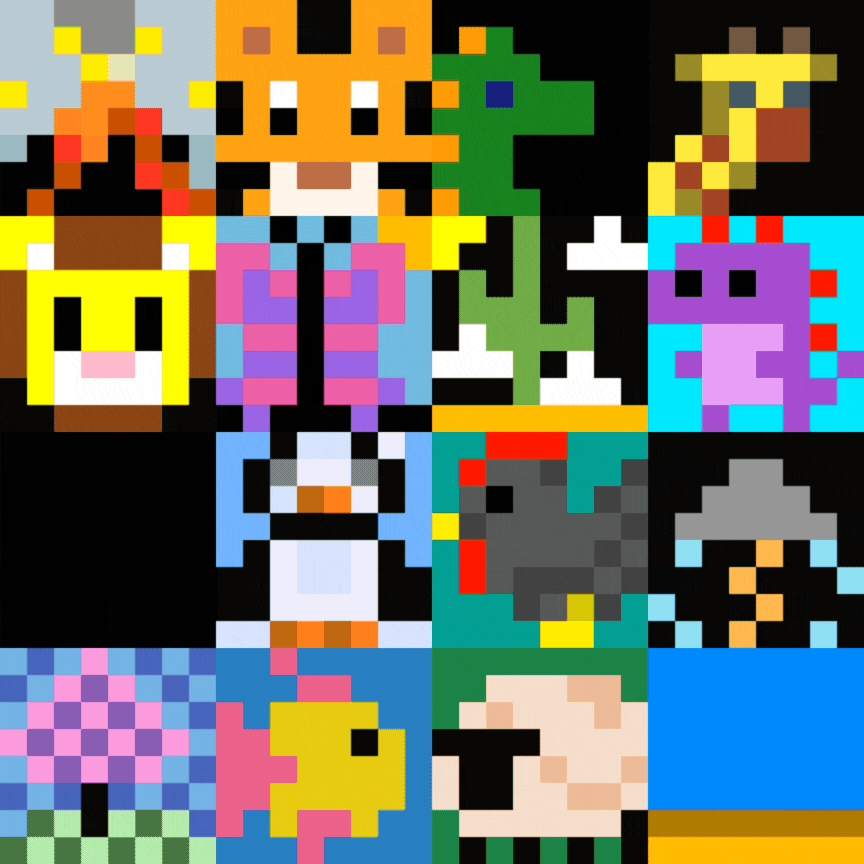Astro Pi Teams receive their data and certificates
Students across ESA Member and Associate States will be receiving data acquired by the Astro Pi computers onboard the International Space Station (ISS) this week. This marks the end of the 2023-2024 edition of the European Astro Pi Challenge, an ESA Education project run in collaboration with the Raspberry Pi Foundation.
Mission Zero pixel art lights up astronauts’ daily tasks

16,039 teams, composed of 24,409 young people, created pixel art inspired by nature as part of Mission Zero. 15,942 of those teams were successful in having their code run on the ISS. The codes were made "ready for launch" by ESA and the Raspberry Pi Foundation as part of the Astro Pi challenge. All teams and mentors whose programs ran will receive a certificate with the time, date and location coordinates of when their programs actually ran in space on the ISS.
We are so impressed with the pixel art creations again this year that we have decided to select some of them to be the new examples in our project guide for next year! You will be able to choose from a few different images and access the code to recreate or remix them yourself.
Mission Space Lab teams investigate the speed of the ISS

Teams participating in Mission Space Lab will also be receiving their certificates this week, plus the data that their programs captured during their run time on the ISS – one of the most unique aspects of the Astro Pi project. Teams receive the data and images from space that they have captured with their own Python programs. This year the challenge was to calculate the speed at which the ISS is travelling in orbit using data collected in space. Now teams will be able to see how well their program performed and the output it produced.
Many participating teams chose to use a method called “feature extraction” with their program, where two points are identified in images and used to calculate the distance travelled over time. Employing this method meant using the visible light camera on the Astro Pi, and the opportunity to take some fantastic images from the ISS Window Observational Research Facility (WORF).
How fast does the ISS travel?
How did teams fare in calculating the speed in our new focused scientific mission? The ISS travels at an actual speed of 7.66km/s, while at its normal altitude (average 400 km). Since altitude can affect the speed, variations occur, but the ISS’s boosters fire up if the station dips too low. We tasked teams to write programs that could adapt to some of these variances using our Astro Pi Replay tool, which simulates programs running on the Astro Pi computers in space.
So, how did the teams’ programs perform while running on the ISS? A wide variety of outputs were calculated, but the average estimate across the programs is fairly close to the actual speed. As you can see, teams did a great job overall in trying to solve this challenge.
Thank you to everyone who took part and to all the amazing educators who ran Astro Pi activities this year!















 Germany
Germany
 Austria
Austria
 Belgium
Belgium
 Denmark
Denmark
 Spain
Spain
 Estonia
Estonia
 Finland
Finland
 France
France
 Greece
Greece
 Hungary
Hungary
 Ireland
Ireland
 Italy
Italy
 Luxembourg
Luxembourg
 Norway
Norway
 The Netherlands
The Netherlands
 Poland
Poland
 Portugal
Portugal
 Czechia
Czechia
 Romania
Romania
 United Kingdom
United Kingdom
 Slovenia
Slovenia
 Sweden
Sweden
 Switzerland
Switzerland


























